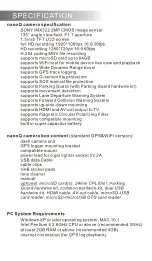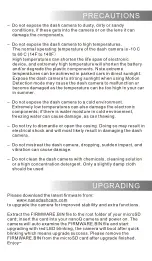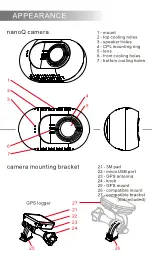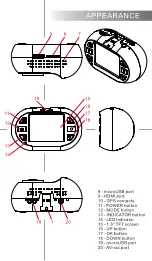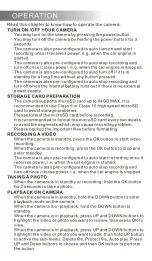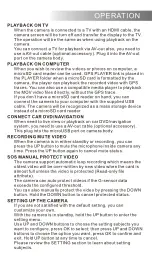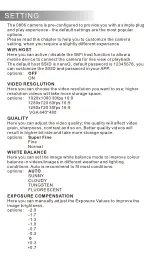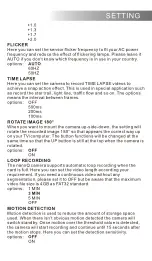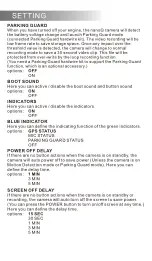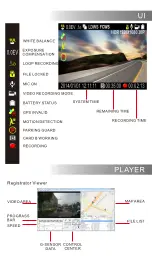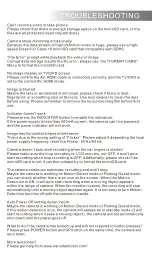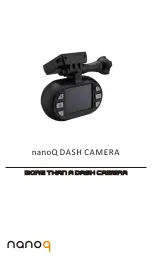
– Do not expose the dash camera to dusty, dirty or sandy
conditions, if these gets into the camera or on the lens it can
damage the components.
– Do not expose the dash camera to high temperatures.
The normal operating temperature of the dash camera is -10 C
to 60 C (14F to 140F
)
High temperatures can shorten the life span of electronic
device, and extremely high temperature will shorten the battery
and/or degrade the plastic components. Note extreme
temperatures can be achieved in parked cars in direct sunlight.
Expose the dash camera to strong sunlight when using Motion
Detection mode may cause the dash camera to malfunction or
become damaged as the temperature can be too high in your car
in summer.
– Do not expose the dash camera to a cold environment.
Extremely low temperatures can also damage the electronic
components; if there is water moisture in cold environment,
freezing water can cause damage, as can thawing.
– Do not try to dismantle or open the casing. Doing so may result in
electrical shock and will most likely result in damaging the dash
camera.
– Do not mistreat the dash camera, dropping, sudden impact, and
vibration can cause damage.
– Do not clean the dash camera with chemicals, cleaning solution
or a high concentration detergent. Only a slightly damp cloth
should be used.
Please download the latest firmware from:
www.nanodashcam.com
to upgrade the camera for improved stability and extra functions.
Extract the FIRMWARE.BIN file to the root folder of your microSD
card; insert the card into your nanoQ camera and power on. The
camera will auto examine the FIRMWARE.BIN file and start
upgrading with red LED blinking, the camera will boot after quick
blinking which means upgrade success. Please remove the
FIRMWARE.BIN from the microSD card after upgrade finished.
Enjoy~
PRECAUTIONS
UPGRADING
Summary of Contents for Q
Page 16: ...MORE THAN A DASH CAMERA nanoq...


